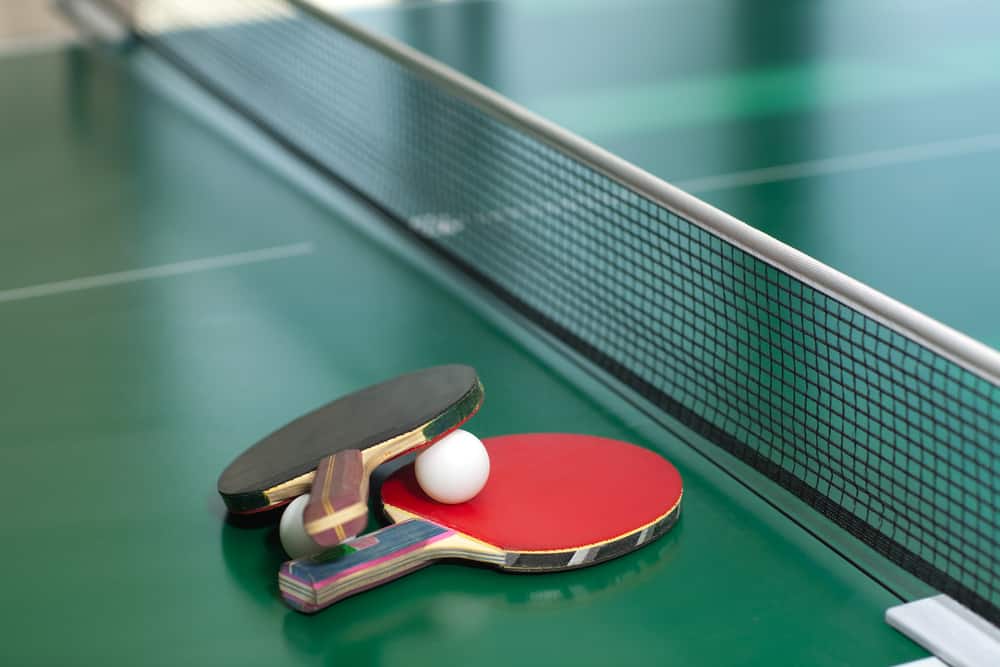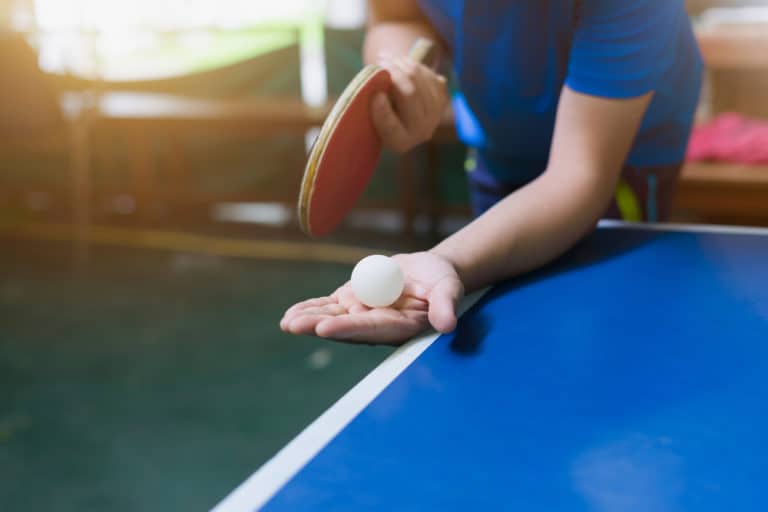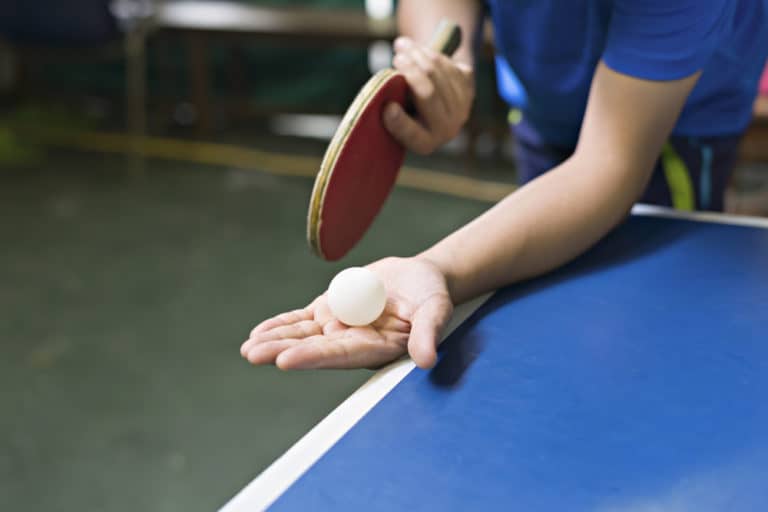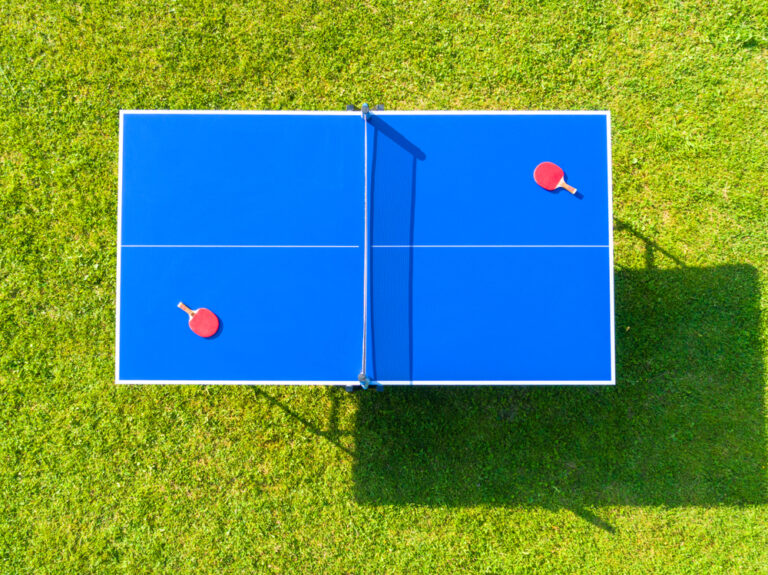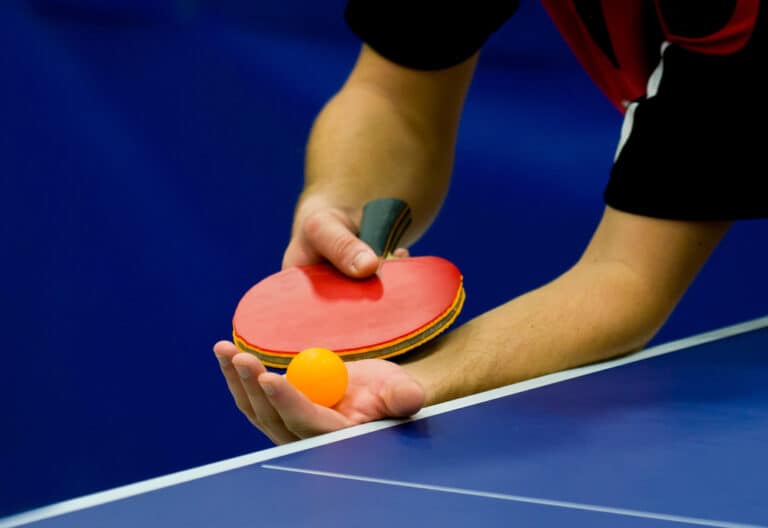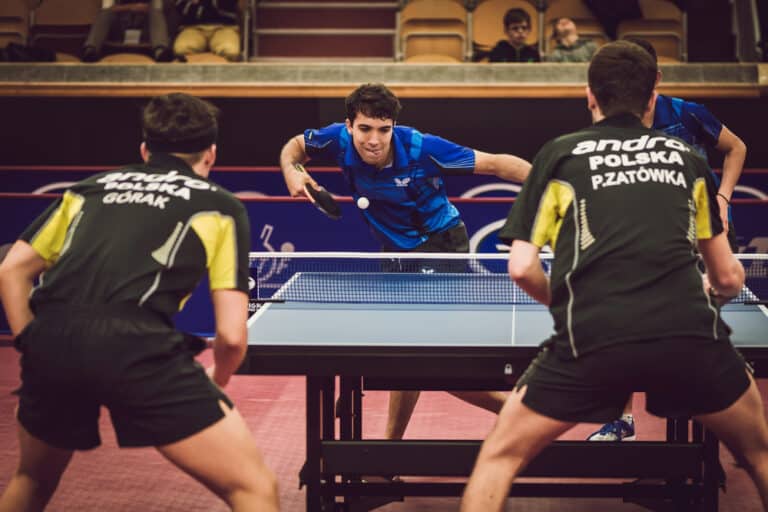How Often Should You Clean A Table Tennis Bat?
Playing table tennis with your friends or against them may be enjoyable. But, unfortunately, your table tennis bat can get reasonably dirty because of the natural oil on your hands that can get into contact with the bat and the ball. So, with that in mind, how often should you clean your table tennis bat to maintain the rubber on your bat for those intricate spin shots and perfect serves?
Table tennis bats should be wiped down before and after use to remove any collected dust, oils, and other dirt and debris. The bat can be cleaned with water and a clean face towel or cloth, while deeper cleaning can be made every two to three weeks and can be done with a sponge and dish soap.
A regularly used bat will need to be cleaned as it is used, and since it collects “fresh dirt,” it becomes easier to wipe down after a match. However, deeper cleans are often required if the bat is not frequently used or stored incorrectly. As a result, let’s take a closer look into what makes cleaning a table tennis bat before and after use necessary and how best to clean it.
How Frequently Should A Table Tennis Bat Be Cleaned?
Table tennis balls accumulate grit, filth, and oil every time they are handled by a player or make contact with the court. Likewise, the ball transmits these compounds upon making contact with the surface of the table tennis bat.
The rubber of a table tennis bat loses its tackiness as dirt accumulates on it, making it harder to hold the ball for spin and control. As a result, it would be best to clean the surface of your table tennis bat before and after each game is advised to prolong its lifespan.
It is advised to protect your table tennis bat with a protective case. However, it makes sense sometimes to take your table tennis bat out to clean it, especially if you don’t play much or haven’t in a while and don’t keep it in a case. Also, since it may have been unused for some time, it might require a deeper clean that calls for dish soap or even the proper chemicals for cleaning rubber.
It may require a deep clean because existing dirt, debris, or oils left idle over long periods on an unprotected bat may have become harder to remove with only water. As a result, whether in use or not, it is advisable to maintain your bat with a deep clean every 2-3 weeks.
Keep in mind that the use of dish soap or even chemicals is infrequent. As a result, inspecting your paddle for any signs of tough dirt or stains first would be best.
Effective Cleaning Methods For Table Tennis Bats
Cleaning a table tennis bat has been overcomplicated in the past by using various cleaning chemicals, which may damage the rubber on the blade if misused. As a result, the following are two excellent examples to use when cleaning your table tennis bat:
After each game, use water to clean the rubber and handle of your blade.
- Wipe off your bat with a clean, damp cloth or face towel before and after each game to prevent this buildup. Remember that you do not want to soak the fabric in water; dampen a small section of the fabric and begin wiping in parallel strokes away from the handle.
- Then either tap it dry with the dry side of the used fabric or fan it dry. If you decide to use a cloth to dry the rubber, hold the paddle with the flat side facing up. Put your sponge, cloth, or other object’s tip at the rubber’s base.
Clean the handle up and away from it. After that, raise the sponge or towel and do a second parallel wipe. Repeat this technique on the opposite side until you thoroughly clean the rubber. You don’t have to use a lot of force to clean the rubber. Just a gentle wipe will do. Putting this into practice allows you to retain the rubber’s texture and save your bat from deteriorating.
- Next, wipe the handle with a dry towel to remove any oil or sweat. The handle may typically be cleaned without water or abrasive cleaners. Instead, take a clean microfiber cloth and round the handle with it. To remove any sweat or oil from your hands, squeeze the towel and massage it back and forth around the handle. Once done, allow the handle to dry.
In case of stains and tough dirt, use dish soap with water or a special rubber cleaner.
- Oily stains can be spot-treated with dish soap and water. In a small bowl, throw in one or two cups (240–470 mL) of water with one pea-sized drop of dish soap. With a spoon, combine the water and soap.
Rub the greasy stain gently, circularly, after dipping a cloth or sponge into the mix. After that, wipe the paddle off with a moist towel to eliminate any soap residue.
- To restore the rubber’s tack, choose a specialized rubber cleaner. An excellent example is the Butterfly Table Tennis Racket Care Kit (Available on Amazon below). Spray some liquid cleanser the size of a quarter on your paddle and use a clean cloth or sponge to massage it into the rubber.
On the opposite side, repeat the process, then let your paddle air dry. By doing this, the rubber will be restored, and the paddle’s tack will be recovered. If you play competitively, this is crucial since spins and forceful serves both require a strong tack.
Remember that with time, the bat rubber will begin to deteriorate gradually. Therefore, if you play frequently, you should swap out your bat annually. If you wish, you may replace the rubber using a bat or paddle replacement rubber (Available on Amazon below) and repair glue (Available on Amazon below), but applying a fresh layer of rubber to the bat might be tedious and challenging.
When you handle your bat, your skin’s natural oils might rub off on the rubber. However, they might make your paddle feel slicker than it should and don’t harm the rubber. The ball now bounces differently off your paddle as a result.
It is crucial if you are a player that rests two to three fingers on the rubber rear of your paddle. The rubber of this grip tends to hold a lot of oil.
Tack also describes how sticky the rubber is. The rubber will grab the ball more forcefully the stickier it is. As a result, you might be unable to spin the ball effectively or control your serves if the paddle is too smooth.
Only use a specialized rubber cleaner or treatment if the tack has to be restored. You may check its tack by placing your paddle flat on a table. Then, drop a ping pong ball while holding it 3 to 4 inches above the paddle. The tack is good if the ball doesn’t bounce or bounces only once. The rubber must be repaired if it bounces four or five times before stopping.
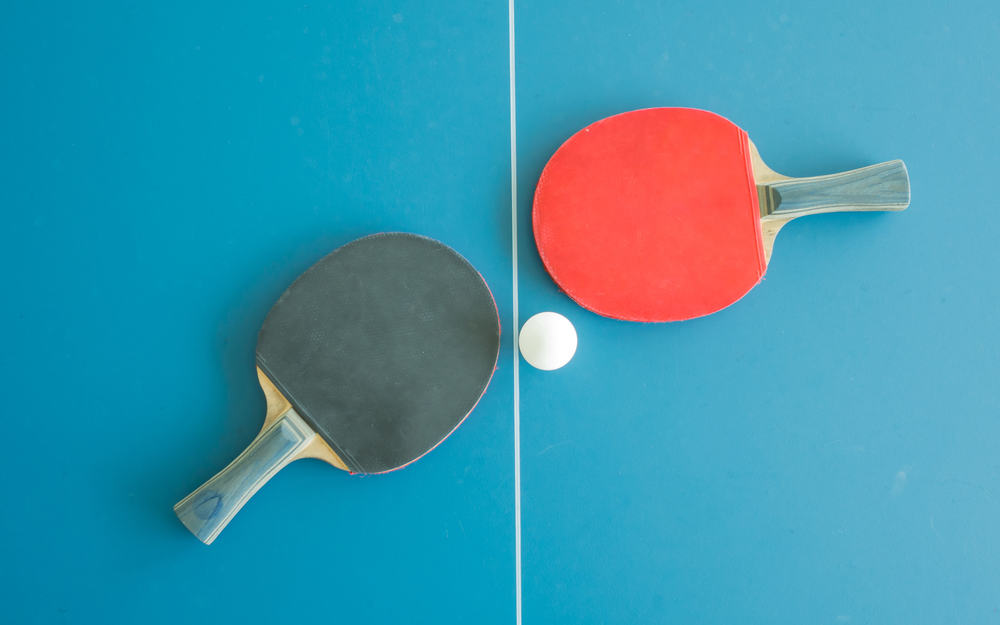
Ways To Keep Your Table Tennis Bat Protected
Since good table tennis blades and rubbers are not cheap, it is sensible to take precautions to guard your pricey table tennis bat against harm. You can use any of the techniques I’ve outlined to help maintain your bat in good shape for as long as feasible.
1. Use A Table Tennis Protect Case
When the bat is not in use, a protective case (Available on Amazon below) helps to keep the whole thing safe. For example, the bat case protects your bat from harm when carrying it around in your luggage. Still, there are a variety of different types of protective cases available.
Because of this, I advise against using bat cases that protect the head of the bat and leave the handle exposed. Instead, it’s an excellent idea to invest in a bat case that can accommodate two paddles so you can make sure your primary and backup paddles are kept together.
A pistol case, which is aluminum-made (so it’s lovely and light) and has foam inside so that you can cut a hole into one or more bats, was even discussed in a few different table tennis forums.
Sounds fantastic, but if you fly with your table tennis bat, airport security may pay you more attention than you would like! To keep your bats safe from all the other stuff you carry in your table tennis bag, a decent protective case for your bat is an investment that will pay for itself. It is necessary.
2. Rubber Protection Sheets
These rigid plastic sheets are intended to be placed on the rubbers’ playing surface to prevent dust and debris from adhering to them. These sheets are provided by certain producers, like Joola, along with their rubbers (like Tango), while other manufacturers, like Butterfly (Available on Amazon below), offer them separately.
In addition, specific rubber protection sheets feature one slightly sticky side to adhere firmly to the rubber and create an airtight seal. Some players assert that this is because the rubber deteriorates more quickly when it comes into touch with air, although I can’t say that I have ever experienced this.
Instead, I believe it serves to keep the protective covering in place on less sticky rubbers. The only issue with this is that, unless you are extremely cautious while handling it, the sticky side tends to gather dust and debris, which kind of negates the purpose. Whether or not they are sticky, the protective rubber sheets function satisfactorily. Use these if they are included with the rubber you purchase.
Tip: If your rubber does not come with a protective rubber sheet, there are a variety of affordable alternatives to premade rubber protective sheets. If your bat does not come with a rubber protection sheet, using one of these substitutes will keep your rubbers tidy while not in use.
- Cling wrap
- The plastic sleeves from the rubber sheet
- Paper
- Zip lock plastic bag
3. Edge Tape For Table Tennis Bats
Edge tape (Available on Amazon below) is a roll of cushioning tape that you may wrap around the outer edge of your table tennis bat to help prevent the blade from splintering or denting in the event that you unintentionally strike it against the edge of the table (or the floor, as all you other defenders would know!).
While some edge tapes are wide and just intended to shield the blade, others are narrower and also serve to prevent the rubber sheet from cracking or being yanked away from the blade. Edge tape is a smart concept that generally works.
4. Keep In Mind That Extreme Temperatures Are Bad
Extremes of heat or cold don’t work well for table tennis rubbers. Too much cold will make the rubber more brittle and destroy the spring in the sponge, while too much heat will quickly bake the rubber and transform it into a sheet of antispin.
Therefore, avoid leaving your table tennis bat out in the sun on your car’s dashboard. Keep your paddle at the same temperature you are comfortable with unless you have money to spend.
5. Ensure The Table Is Kept Clean
The table’s surface accumulates dust and filth over time. When the table tennis ball strikes the surface, these impurities are picked up by the table tennis ball and then transferred to your paddle. Therefore, your bat rubber will remain clean if your table is kept spotless.
To prevent dirt and dust off your table tennis table, frequently clean it. First, wipe the table off with a dry towel after each game. Next, remove the net from the table by unscrewing it once every two to three months.
According to table tennis forums, many users explain that an excellent method to keep it clean is to combine 1/3 cups (79 mL) of white vinegar and 2-3 cups (470–710 mL) of water. Then, use a gentle towel dipped in the water and vinegar mix to clean your table.
The net should be soaked in the water and vinegar mixture for 15 minutes before being air dried on a level surface. Place it back on your table once it has dried. Finally, keep your table covered with a protective cloth while not in use.
Conclusion
Every table tennis rubber will ultimately need to be changed because of deterioration. However, by taking care of them and giving them a thorough wipe before use and a quick clean after use, you may extend the life of your rubbers (and ensure that they remain tacky for longer). Keep in mind that if you take good care of your bat, it will take good care of you on the table.

